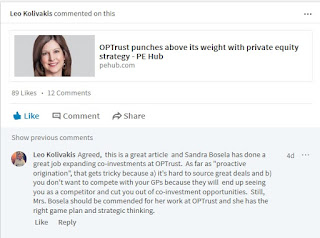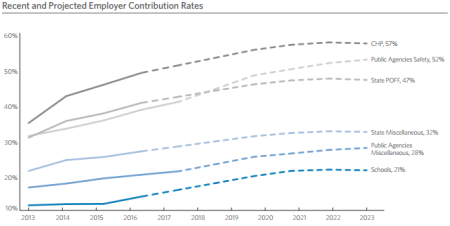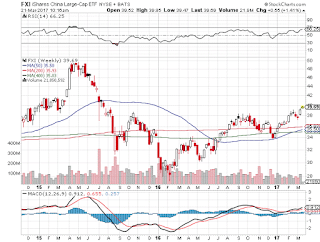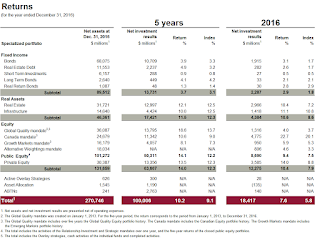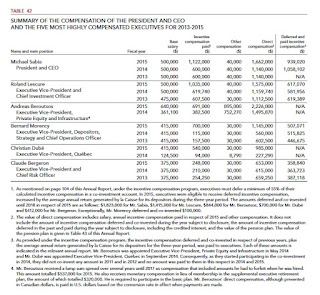Leo Kolivakis is a blogger, trader and independent senior pension and investment analyst. This post was originally published at Pension Pulse.
Kirk Falconer of PE Hub Network reports, OPTrust punches above its weight with private equity strategy:
OPTrust has greatly expanded its private equity program, deploying a strategy that gives the mid-sized pension fund access to opportunities usually available only to larger institutions.
OPTrust, which invests on behalf of OPSEU Pension Plan, the retirement system for about 90,000 Ontario public employees, this week reported a net return of 6 percent for 2016. Net assets grew to more than $19 billion from $18.4 billion in 2015.
Overall numbers were boosted by a strong performance in the PE portfolio. PE investments returned a net 20.6 percent last year, up from 14.4 percent in 2015.
These results cap a major five-year increase in OPTrust’s PE allocation. At the end of 2016, the portfolio held nearly $1.6 billion in assets, more than triple the amount in 2012. Private equity’s share of total assets rose in this period to 9 percent from 4 percent. OPTrust’s notional target is 15 percent.
OPTrust Managing Director Sandra Bosela, who heads the global PE group, told Buyouts that most of the growth owes to a strategic shift favouring direct deals and co-investments.
Prior to 2012, the main focus of OPTrust’s PE portfolio was funds and secondaries, with direct activity accounting for 20 percent of assets, Bosela noted. By 2016, the direct share was 48 percent.
Bosela, formerly a general partner with 15 years of experience, joined OPTrust Private Markets Group in 2012 to develop the PE strategy and ramp up direct investing. She says the result is an ability to “punch above our weight.”
“I’m pleased with the progress,” Bosela said. “Our strategy has been designed to carve out a niche that leverages our size and includes more direct, actively managed investments. It has opened doors for us and created access to deal flow that’s typically available only to our much larger peers.”
Deals plus funds
OPTrust is targeting a 50:50 balance between the portfolio’s direct and fund sides, Bosela said. That’s because many of the best opportunities for co-underwriting deals come from a core group of fund partners.
Opportunities are also sourced with “like-minded partners,” Bosela said. They include a range of market players, such as PE firms, strategic investors, financial players and business owners.
Drawing on these sources, OPTrust has increased both the pace and range of its mid-market buyouts and other PE transactions in North America, Europe and developed Asia.
Disclosed examples include OPTrust’s 2014 investments alongside Altas Partners in St. George’s University, a Grenada medical school, and alongside CDCM in Skybus, an Australian airport transit service.
Over 2014-2015 it also joined Imperial Capital Group in backing U.S. home-alarm monitor Ackerman Security Systems and Canadian dental network Dental Corp.
John Groenewegen, Partner, Osler, Hoskin & Harcourt LLP.In-house resources
OPTrust’s experience may provide a model to some other small and mid-sized pension funds looking to expand their PE allocations.
John Groenewegen, a partner at law firm Osler, Hoskin & Harcourt, says OPTrust’s private equity program has “put them in a position they would not otherwise be in.”
Groenewegen, who advises pension-fund clients, says a central factor in OPTrust’s approach is in-house resources that include “professional deal-makers.”
“OPTrust has invested in the right funds, and an experienced team has ensured it can act quickly and make decisions quickly,” he said. “That’s key to being a good deal partner, to being invited back.”
Bosela agrees, noting that OPTrust’s ability to be “a value-adding partner, one that can execute shoulder-to-shoulder, even on complex transactions” is essential to its direct investing. “We’re not the big elephant in the room,” she says. “We must offer something other than our money.”
Not standing stillOPTrust aims to place more capital in the months ahead, Bosela said. She is mindful, however, of an “overheated” market environment, fuelled by high values and “heightened levels of dry powder.”
Market frothiness has reinforced a disciplined, selective focus to investments, Bosela said. OPTrust also will give more emphasis to private debt and long-term equities to help balance the portfolio and reduce volatility.
Bosela says OPTrust is not “standing still” with the PE program, but will instead continue to add to its capabilities. For example, it is exploring “proactive origination,” intended to accelerate independent sourcing of direct opportunities.
OPTrust PMG has a team of 18 located in offices in Toronto, London and Sydney, Australia. Overseeing nearly $4 billion in assets, it is co-led by Bosela and Gavin Ingram, a managing director and head of the global infrastructure group.
I recently covered how OPTrust is changing the conversation, emphasizing its funded status first and foremost instead of its annual results.
In that comment, I covered a conversation with OPTrust’s President and CEO, Hugh O’Reilly, and its CIO, James Davis, where we spoke at length about the funded status and shift in investment philosophy.
When I went over some of their private market investments, I noted the following:
In private equity, they invest and co-invest with funds but as James told me, “they’re not looking to fill buckets” and will use liquid markets to fulfill their allocation to illiquids if they’re not fully invested.
In infrastructure, they have done extremely well by investing primarily directly through co-sponsored deals with their strategic partners. Their focus is on the mid-market, with cheque sizes of $100M to $150M and where there is less competition.
After reading the article above, I noted the following on LinkedIn (click on image):
If you can’t read it, here it is again:
Agreed, Sandra Bosela has done a great job expanding co-investments at OPTrust. As far as “proactive origination”, that gets tricky because a) it’s hard to source great deals and b) you don’t want to compete with your GPs because they will end up seeing you as a competitor and cut you out of co-investment opportunities. Still, Mrs. Bosela should be commended for her work at OPTrust and she has the right game plan and strategic thinking.
The truth is OPTrust is punching above its weight in private equity and other activities but just like everyone else, there are limits to what Canada’s mighty PE investors can do in terms of “proactive origination” in direct private equity deals.
Most direct investing at Canada’s large pensions is done via co-investment opportunities the general partners (GPs) offer their limited partners (LPs, ie. pensions and other institutional investors).
Even though LPs pay big fees for comingled funds, co-investments have little or no fees but they require expertise from the pension staff that needs to quickly evaluate these larger transactions before investing in them.
In fact, John Groenewegen alluded to this: “OPTrust has invested in the right funds, and an experienced team has ensured it can act quickly and make decisions quickly,” he said. “That’s key to being a good deal partner, to being invited back.”
And Bosela is right, OPTrust’s ability to be “a value-adding partner, one that can execute shoulder-to-shoulder, even on complex transactions” is essential to its direct investing. “We’re not the big elephant in the room,” she says. “We must offer something other than our money.”
In order to expand your co-investments to lower the overall fees you pay in private equity, you need to a) invest in the right funds and b) have an experienced team to quickly evaluate co-investment opportunities.
It sounds easy and straightforward but it isn’t. If your pension fund doesn’t have the right governance to attract and retain qualified staff, you can forget all about expanding direct investments in private equity by gaining access to more co-investment opportunities.
So, first you need to choose the right funds and second you need to have very qualified people on your team to evaluate co-investment opportunities relatively quickly.
And judging by the outstanding long-term returns, Bosela and her team are good at both. She’s also right to fret about the current conditions in private equity which I alluded to on Friday when I discussed why there’s no luck in Alpha Land:
[…] it’s not just hedge funds. The same thing is going on in private equity where there’s a mountain of dry powder and the market return differential over public markets is narrowing:
Private equity firms had as much as $1.47 trillion in funds available to invest at the end of 2016, and debt capital was also readily available to bolster their investments. Still, a situation of rising asset prices, together with fierce competition for these assets in an environment overcast with a possibility of an upcoming recession that could drive down prices, made it difficult to close deals, according to an annual global private equity report from Bain & Company. These firms are cautious about whether today’s deals will bring them to their targeted returns. Banks are also wary of financing big deals.
According to Hugh MacArthur, head of global private equity with the Boston management consulting firm, “Capital superabundance and the tide of recent exits drove dry powder to yet another record high in 2016. Shadow capital in the form of co-investment and co-sponsorship could add another 15% to 20% to that number. While caution about interest rates remains, there is a general expectation that debt will remain affordable. As a result, deals won’t be getting any cheaper.”
Investors continued to show interest in private equity in 2016, and these firms raised $589 billion globally, just 2% shy of the 2015 total. One 2016 trend to note is the rise in “megabuyout” funds that raised more than $5 billion each, with 11 such funds raising a total of $90 billion. These funds appear particularly appealing to institutional investors who want to deploy large amounts of money into private equity, the management consulting firm reports.
And an overall decline in the net asset values of buyout firms, as their distributions to investors outpaced their new investments plus the value of their existing holdings, meant that some investors found themselves short of their targeted private equity allocation. For instance, the Washington State Investment Board pension fund found its private equity allocation down to 21% in 2016, from 26% in 2012. This created a positive environment for private equity fundraising in 2016, but the industry is apprehensive that this strong pace cannot last for too long, as a recession and a stalling stock market, for instance, could upset the strong dynamics.
The buyout market started off slow in 2016, as the Chinese stock market bust, declining oil prices and the uncertainty regarding Brexit in Europe all had an impact. In North America, the market did not recover momentum and the total number of deals for the year was down 24%, with deal value off 16%. In Europe, there was a more moderate drop off.
Bain finds that there is a potential for almost 800 public companies to be taken private in buyouts, but expects a much lower level of actual public-to-private buyouts going by historical activity. While returns on private equity buyouts continue to outshine the returns on public markets, the gap is closing, as it is getting harder for private equity to find outsize returns on undervalued assets in today’s more benign economic environment.
Private equity investors have also settled into longer holding periods of about five years for their investments, and this state of affairs is likely to endure for the near term. Historically, these firms have held on to assets for three to five years, but this period was pushed up in the aftermath of the financial crisis as firms had to nurse their assets over a slow recovery period, the management consulting firm reports.
In fact, deals that private equity firms were able to quickly flip over, holding onto them for less than three years, made up a mere 18% of private equity buyouts in 2016, compared to a 44% share in 2008.
No doubt, these are treacherous times for private equity and there is a misalignment of interests there too. Just ask CalPERS, it’s experiencing a PE disaster even if it’s been completely misconstrued in the popular blog naked capitalism.
I recently had a chance to talk to Réal Desrochers, the head of CalPERS’s PE program, and he told me he was concerned about the wall of money coming into private equity from super large sovereign wealth funds, many of which aren’t staffed adequately but just write “huge cheques” to private equity funds (and hedge funds).
It’s a recipe for disaster and it all reminds me of what Tom Barrack said in October 2005 when he cashed out before the crisis hit:
“There’s too much money chasing too few good deals, with too much debt and too few brains.” The amateurs are going to get trampled, he explains, taking seasoned horsemen, who should get off the turf, down with them. Says Barrack: “That’s why I’m getting out.”
Every large and small institutional investor playing the cheque writing game should post this quote in their office along with my favorite market quote by Gary Shilling often attributed to Keynes: “The market can stay irrational longer than you can stay solvent.”
As far as private debt, it’s an increasingly popular asset class among Canada’s large pensions, including PSP which is “playing catch-up” to its large peers in this activity.
I will end it there and just say that it’s refreshing to see how OPTrust is punching above its weight in private equity and other activities. It’s not always size that matters, you can differentiate yourself in other ways as long as the governance is right.
